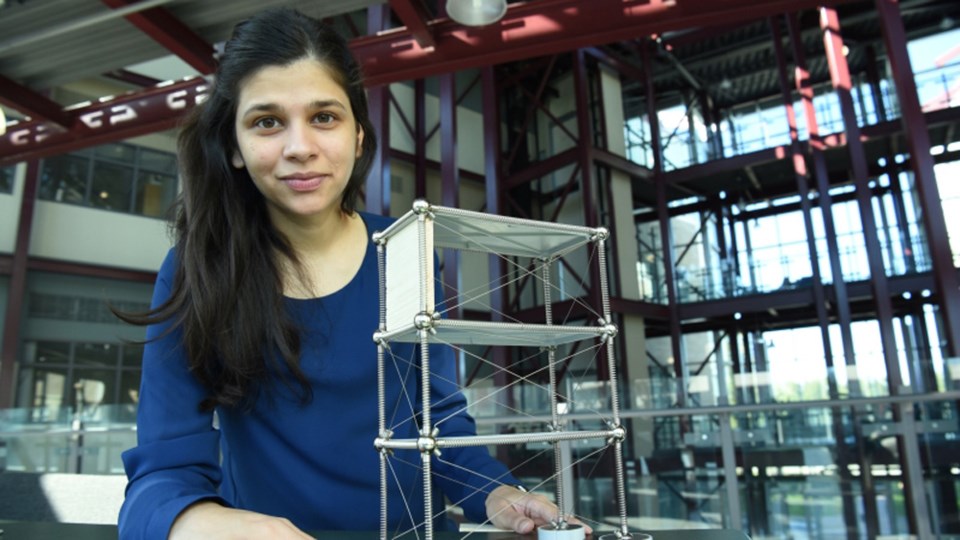UNBC civil engineering assistant professor Ramla Qureshi will be using models to study how wood-steel hybrid buildings would perform under the most difficult and dangerous conditions.
Designing buildings with steel frames and cross-laminated timber or other engineered wood products for floors and walls, instead of concrete, would make them lighter and reduce their environmental footprint.
The question for builders and policy makers is, how would such buildings handle disasters like fires and earthquakes?
“Engineers need to have a certain level of reliability in a structure's performance against extreme hazards such as earthquakes and fires throughout the building's life cycle,” Qureshi said.
“Especially in places with considerable seismic activity, such as British Columbia, we need to understand and quantify the risks from such events that can cause damage to, or limit the performance of, such construction.”
Qureshi and her team received $132,000 over five years from the Natural Sciences and Engineering Research Council Discovery Grant program to conduct the research. The funding will support research from at least five undergraduate students, three master’s students, two PhD students and potentially one post-doctoral fellow.
Once the team will build models to industry standards and subject them to the hazards under laboratory conditions, then assess the damage to quantify how hybrid buildings perform compared to traditional wood frame and steel-concrete construction.
“If a reliable, data-driven understanding of the risks to human life safety and building occupancy can be adequately quantified, along with benchmark estimates of socioeconomic effects of future earthquakes, fires, and cascading events - such as fire following an earthquake - such construction just may see an uptick in public opinion,” Qureshi said.
“Based on the results from this damage assessment, the research team will quantify structural and socioeconomic losses and create catastrophe models for insurance applications. It is also part of the research objectives to translate this knowledge to code provisions and industry-ready software tools.”
The research will be conducted in the Wood Innovation and Research Laboratory in downtown Prince George.



